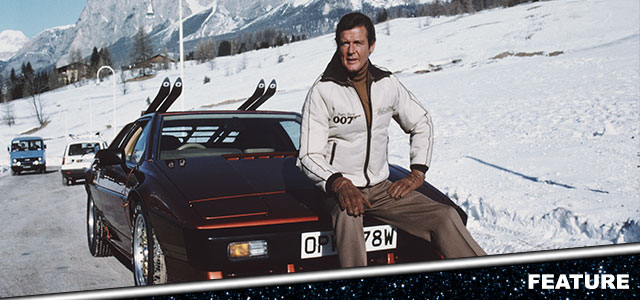
The 25th James Bond movie No Time To Die arrives in Cineworld in September, and we're counting down the days by revisiting all the 007 movies in chronological order of release.
In honour of Daniel Craig's swansong as 007, we're taking a nostalgic trip back through time. This week: Roger Moore stars in For Your Eyes Only...
What is the story of For Your Eyes Only?
The British spy vessel St Georges is bombed and sunk in the Ionian sea off the coast of Greece. The craft is equipped with ATAC – Automatic Targeting Attack Communicator, which allows the Ministry of Defence to coordinate with the British Royal Navy's fleet of nuclear-equipped submarines. Should the technology fall into Soviet hands, it will place Western powers in danger of attack by their own missiles.
Marine archeologist Sir Timothy Havelock is sent to locate the wreck, but is killed by hitman Hector Gonzales before he can locate anything. However, Gonzales fails to kill Havelock's daughter Melina (Carole Bouquet), who swears revenge on those who killed her family. When sent to discover who hired Gonzales, British agent James Bond/007 (Roger Moore) crosses paths with Melina, setting in motion a story of revenge and betrayal that encompasses the long-running feud between Greek smuggling enemies Kristatos (Julian Glover) and Columbo (Topol).
How did For Your Eyes Only get made?
The James Bond franchise reached for the stars in 1979's Moonraker – with decidedly mixed results. Although the movie became the most financially successful Bond offering to date ($210 million worldwide), critical reaction was somewhat negative. Worse than that, many felt Bond had reached the nadir of self-parody, slipping so far into comedy (not exactly helped by Roger Moore's lighthearted portrayal of 007) that it was hard to see a way back for the series.
In hindsight, Moonraker was always going to feel the influence of George Lucas's all-conquering Star Wars, which had been unleashed just a couple of years earlier. Throughout much of the 1970s, Bond wasn't setting trends but continually catching up to them; so clearly producer Albert R. 'Cubby' Broccoli sensed there was money to be made by cashing in on the Star Wars fan base – it was, after all, the most successful film ever made at that time.
So, where does one go when he's reached the pinnacle of space? The only answer is all the way back down again to planet Earth. Moonraker follow-up For Your Eyes Only refreshingly ditches the outlandishness of its predecessor (well, mostly), all the while asking Moore to invest more seriously in the role of the world's most famous secret agent. The movie largely succeeds with some caveats – the presence of a revenge plot spurred by Bond woman Melina adds a degree of dramatic depth and helps coax more subtlety from Moore than usual, while transmogrifying the typical Bond/Bond girl relationship. In this movie, it's clear the attraction is there between the two characters, but it's also clear that Bond wants to help Melina on her quest to find the killers of her parents.
For Your Eyes Only is historic in that it's the first of five Bond movies helmed by John Glen. He had been a long-time editor and second-unit director on the Bond franchise, and his skill at cutting around a set-piece is evident in For Your Eyes Only, even if he can't completely escape the silly humour that had marred Moore's tenure. Co-writer Michael G. Wilson, who would eventually be elevated to producer along with Broccoli's daughter Barbara, said: "If we went through the path of Moonraker things would just get more outlandish, so we needed to get back to basics."
Returning screenwriter Richard Maibaum, who had been absent from The Spy Who Loved Me and Moonraker, combined elements of various Ian Fleming stories. Primarily, he combined two Fleming shorts, For Your Eyes Only and Risico, with unused elements from Live and Let Die. This chiefly centred on the addition of the keel-hauling/shark-dragging sequence, which had been absent from the movie adaptation of Live and Let Die. Another aspect came from Fleming's novel Goldfinger: the addition of the 'Identigraph' machine, used by Bond and Q (Desmond Llewelyn) to identify killer Emile Leopold Locque (Michael Gothard). However, in Fleming's original source, it was known as the 'Identicast'.
By and large, the emphasis was on realism, although the film's pre-title sequence indicates that we're perhaps in for more Moonraker-style silliness. After an effective moment where Bond is shown laying flowers at his wife Tracey's grave, his plane is remotely hijacked by a bald man (seen only from behind) with a white cat. Just don't call him Blofeld: the highly litigious Kevin McClory still owned the rights to Fleming's Thunderball story, and continued to block Bond creators EON from using any aspect of the character, or his Spectre organisation. (McClory would deliver his own Thunderball story with 1983's Never Say Never Again.)
It's been speculated that the climax of the pre-title sequence, in which Bond dumps his enemy down a smokestack, is Cubby Broccoli's none-too-subtle way of telling McClory that the Bond franchise no longer had any need for Blofeld. Either way, the silly sequence (the villain even attempts to bribe Bond with "a delicatessen in stainless steel") doesn't fit well with the relatively gritty and enjoyable tone of what follows.
In stark contrast to many of the Roger Moore Bond movies, gadgets are largely absent from For Your Eyes Only. This places greater emphasis on Bond's need to use his wits; this is most apparent in the classic car chase scene where he's deprived of his self-destructive Lotus, and forced to use Melina's decidedly underpowered Citroen CV, surely the least glamorous Bond car ever conceived. It sets in motion an exciting chase full of impressive stunt work around, up and down the twisty hills of Spain (actually the north of Corfu in Greece) which, though outlandish, never approaches the nonsensical qualities of Moonraker.
Yet more impressive stuntwork is captured in the extended ski chase sequence, shot in the Italian alpine resort of Cortina d'Ampezzo. Bond is pursued by the henchmen of the villainous Locque (one of whom is a young Charles Dance), and the chase goes off-piste in more ways than one, remarkably culminating in a motorbike hairing down a bobsled run. The scene is another fine showcase for veteran Bond stuntman Willy Bogner Jr. and was in fact so dangerous to film that a crew member died while it was being captured. The scene is more than a little daft, but it's hard to deny the technical virtuosity of getting a skier and a bike tailing behind a bobsled at the same time – it's a reminder of the kind of practical movie magic that existed in the pre-CGI era.
Aside from the interludes in Spain and Italy, the entirety of For Your Eyes Only takes place in and around Corfu in Greece. The landscape is well captured by cinematographer Alan Hume, from the sweeping vistas of the Triana to the towering cliff-edge monasteries of Meteora in the centre of the country. It's this unique landscape that inspires a nail-biting finale as Bond is forced to ascend the enemy's top-secret hideout – Moore's palpable fear of heights helps further charge a nail-biting scene that's all the more powerful for being so grounded and relatively plausible in the wake of Moonraker.
Further grit comes in Bond's ruthless execution of Locque, whose car he kicks off a cliff. Moore was reluctant to film the scene, but the end result is one of his most memorable Bond moments, and proof that he could be as tough as Sean Connery when the situation called for it.
There's also a degree of intelligence in the treatment of the supporting characters. Bouquet's Melina is no throwaway Bond girl but a haunted woman in pursuit of vengeance at all costs. The character of Kristatos, played in understated fashion by Julian Glover, is intriguing for being introduced as an ally to Bond, only to eventually be revealed as a traitor. (Glover has the unique distinction of having played both a Bond and an Indiana Jones villain.) Indeed, it's alleged villain Columbo who turns out to be the good guy, the role aided in no small manner by the twinkly-eyed charm of Fiddler on the Roof Oscar-winner Topol.
It is, therefore, a bit of a shame that the enmity between Kristatos and Columbo ultimately comes to little more than a brief fist-fight. The latter's execution of the former (he throws a knife into his back) also robs Melina of her crusade; although this is meant to underline Bond's sobering point about the corrosive nature of revenge, it feels underplayed. Not until the franchise got into the Timothy Dalton and Daniel Craig eras did we feel there were there actual consequences to a life of violence and revenge.
It's disappointing that the conviction in the dramatic scenes, rare for a Roger Moore Bond movie, is undercut by jokey set-pieces. Just as the movie started, it ends with a bizarre scene in which British PM Margaret Thatcher (played by impressionist Janet Brown) mistakes Melina's parrot Max for Bond himself; in reality, the two lovers have gone for a skinny-dip, forcing a flustered Q, who's monitoring the call with the PM, to quickly pull the plug. What a shame that even in the midst of a somewhat serious-minded Bond film the filmmakers again had to stoop to jokes to round everything off.
While the casting of Lynn-Holly Johnson as the teenage ice skater who's oddly infatuated with Bond strikes a sour note, a bit of dignity comes from the late Cassandra Harris. Married to future Bond Pierce Brosnan (whom she touted for the role), Harris brings gravitas to the role of the ill-fated Countess Lisl von Schlaf, Columbo's mistress whom Bond romances before she's brutally killed. Tragically, Harris would never get to see her partner become 007, as she passed away from cancer in 1991 before he was cast in Goldeneye.
For Your Eyes Only was, in many ways, a transitional movie in the Bond universe. Following the death of M actor Bernard Lee, the role was temporarily shelved, giving way to MI6 Chief of Staff Bill Tanner, played by James Villiers. This anticipated a new actor taking on the role of M in 1983's Octopussy: Robert Brown, who had appeared as an Admiral in The Spy Who Loved Me.
Significantly, For Your Eyes Only was also the final Bond movie to be distributed solely by United Artists; the company would be absorbed by Metro-Goldwyn-Mayer not long after the film's release, hastened by UA's collapse in the wake of notorious financial flop Heaven's Gate, directed by Michael Cimino. This ended UA's grip on the franchise, which dated all the way back to the beginning with 1962's Dr. No. It was another clear sign that while the character of Bond was impervious within the world of the movies, the franchise itself was subject to ongoing turbulence in the wider world, both economic and cultural.
READ MORE
- No Time To Die and the 6 James Bond movies we never got to see
- 7 actors who could play James Bond after Daniel Craig retires
- Shaken and stirred! Daniel Craig's defining 007 moments
What music is on the For Your Eyes Only soundtrack?
John Barry's on-off relationship with the Roger Moore movies continued in For Your Eyes Only. Having scored Moonraker, he now stepped aside again in favour of Rocky composer Bill Conti. The latter was riding high in the wake of Sylvester Stallone's 1976 smash – his brassy, heroic main theme helped elevate the humble Philadelphia boxer into the realm of near-myth. And two years after For Your Eyes Only, Conti would secure his reputation with his stirring, Oscar-winning score for space race drama The Right Stuff.
Back to Bond, however. The first thing Conti does brilliantly is shake up the gun barrel music, adding a funky disco beat and bongo drums to bring Bond into the 1980s. It's the most radical twist on the opening Bond theme since the beginning of the franchise, and sets the tone for a mixed bag of a score that is badly dated in some ways yet swooningly attractive and highly romantic in many others.
It's perhaps the action music that suffers the most in For Your Eyes Only. In stark contrast to Barry, whose assured mastery of the orchestra cemented the sound of 007, Conti amplifies more period-specific tones with an emphasis on drum machines and synthesisers; it's cheesily effective in the context of the movie but lacks the timeless appeal of Barry's work. The pivotal scene where Bond is chased on skis and down a toboggan run is a case in point. The Citroen CV car chase music, named 'A Drive in the Country' after Roger Moore's dry ad-lib, is another example.
That said, Conti is pleasingly loyal to the main For Your Eyes Only melody, performed in the opening credits by Scottish artist Sheena Easton. She was the only Bond vocal artist to appear within the context of a 007 credits sequence, and her sensual vocals certainly fit with the atmospheric tone of Conti's music, whose synthesised ambience suggests the nautical quest at the heart of the movie. Easton's song was a critical and popular success, nominated for Best Original Song at the Oscars and peaking at number eight on the UK singles chart.
Conti's adaptation leads to some lovely, heartfelt moments, with suitably Barry-esque horn and string arrangements melding with more contemporary keyboard sounds.
There's also a lovely, heartfelt reprise on oboe during the scene where Bond and Melina stand overlooking gorgeous Corfu. It humanises and deepens what might otherwise be another throwaway 007 relationship; Moore and Bouquet's acting helps, of course.
Conti also excels at the 'transitional' Bond music that introduces us to new locations. The sweeping strings of 'Cortina' are pure Barry.
And Conti also does interesting things with the Bond theme itself. In truth, he probably reinstates it more than Barry ever did during his preceding Bond scores, including the pensive guitar/synthesiser licks of 'Submarine' as Bond and Melina approach the wreckage of St Georges.
How was For Your Eyes Only received?
For Your Eyes Only held its London premiere on the 24th of June 1981, following a highly contentious marketing campaign. The film's infamous poster, showing Bond in the distance framed between a woman's legs, was designed by artist Bill Gold, and let to considerable controversy. However, there's no doubt this helped drum up greater publicity for the film, not to mention the fact that the Royal couple, Prince Charles and Princess Diana, were attendees at the premiere.
Critical reaction to the film at the time was mixed; many cited the film's impressive stunts, but said the retrograde humour was representative of past failures in the Moore movies. The Guardian's film critic Derek Malcolm was unimpressed, saying that Bond "inhabits a fantasy-land of more or less bloodless violence, groinless sex and naivety masked as superior sophistication", with Moore playing him as if in a "nicely lubricated daze".
Even screenwriter Richard Maibaum cited disappointment with the end result, saying the film betrayed the potential in the Bond/Melina relationship: "We tried to return to the earlier films with For Your Eyes Only but we didn't have Sean to make it real. And I was very disappointed with the way the love story was handled. The whole idea was that the great lover James Bond can't get to first base with this woman because she was so obsessed with avenging her parents' death. Nothing was ever done with it. It was as if the director didn't feel there was a love story there at all."
That said, the movie defied the critical responses to post a healthy $195 million worldwide. It was just shy of Moonraker's standards, but when measured against its relatively smaller $28 million budget (Moonraker cost $34m), For Your Eyes Only emerged as a profitable success. And in recent years, critical retrospectives have tended to view the film in more positive ways, particularly when it's placed against the excesses of Moore's other films. As proof, in 2006, IGN chose For Your Eyes Only as the sixth best Bond film, claiming it is "a good old-fashioned espionage tale."
What was the next movie in the James Bond series?
Octopussy was the next Bond movie, released in 1983.
When is No Time To Die released in the UK?
No Time To Die is released on 30th September. Don't forget to tweet us your favourite James Bond movies @Cineworld.



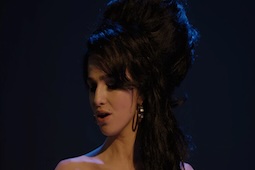

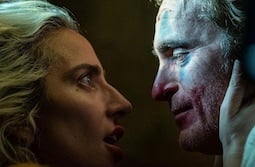
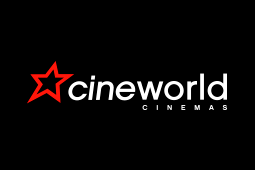
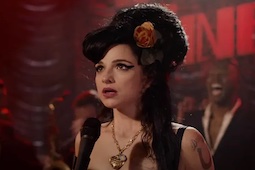
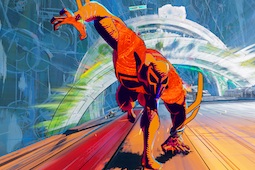
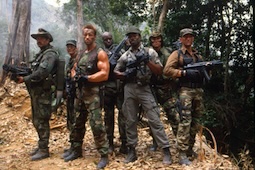




.jpg)
.png)



